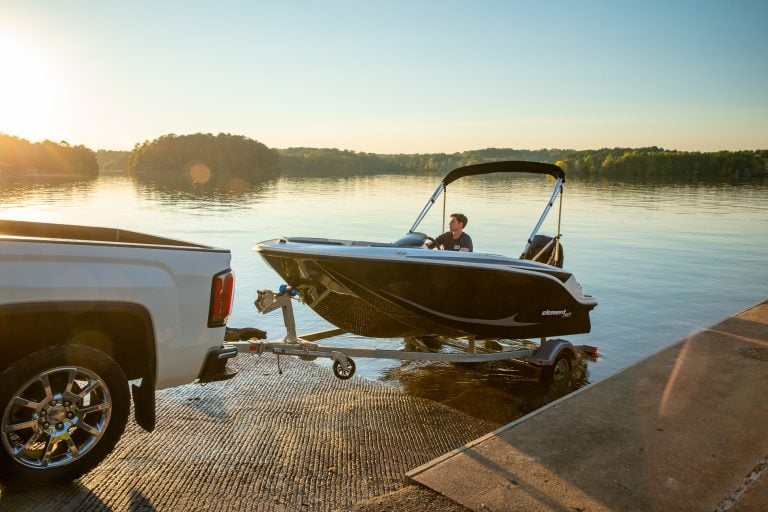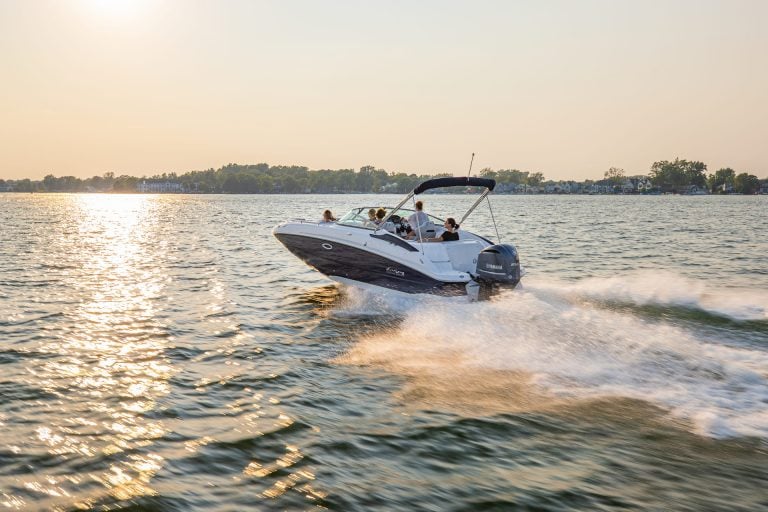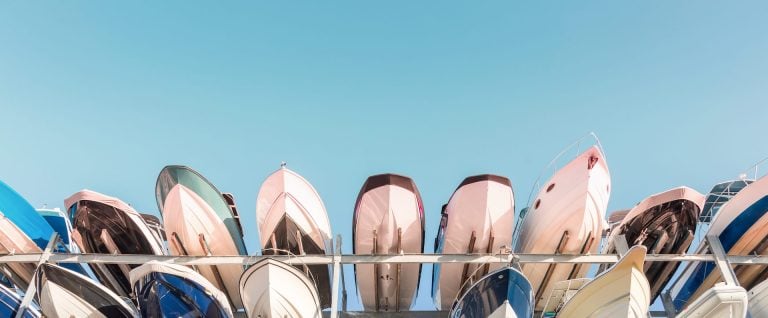One of the most important things you need to know before setting out on the water is how to securely tie your boat’s lines to dock cleats. Your boat is one of your prized possessions, and the last thing you want is it coming loose from the dock and drifting off on its own.
To a dock
You can tie a boat to a dock by fastening your lines to either dock cleats or, if there aren’t any cleats, to pilings.
In a slip
In a slip, you’ll need to fasten your boat on both sides to keep it in place and stop it from hitting the docks or piles on either side of the slip.
What is a dock cleat?
So, what exactly are you tying your boat’s mooring line to? A dock cleat is a piece of hardware attached to a dock. The most common type is the double horn cleat, which is shaped like an anvil or handlebar. It’s secured to the dock with a middle post, topped with a bar that runs parallel with the edge of the dock. Dock cleats are typically made from sturdy materials like stainless steel, galvanized metal, wood, or nylon.
Horn Cleats & how to tie a cleat hitch
A cleat hitch is a type of knot. It’s a relatively simple knot that’s strong enough to keep your boat’s mooring line securely fastened to the dock.

Step 1
Take your rope and bring it around the base of the cleat on the side farthest from your boat — this creates the tension you need to keep the knot secure. In other words, if you’re standing on the dock in front of the cleat and your boat is to your right, bring the rope around to the left side of the cleat. If the boat is to your left, bring the rope around to the right side of the cleat.
Step 2
Bring the rope along the front (your side) of the cleat’s base, around to the back, and over the top of the horn closest to your boat, pulling the rope towards you.
Step 3
Loop the rope under and over the other horn of the cleat, creating a figure eight.
Step 4
Double up the remaining line into a loop and twist it once so the loose end is on the bottom. (To do so, twist the rope towards yourself.) Slide this loop over the horn closest to your boat and pull tight towards yourself.
How do you know if you’ve done this right? Look at how the rope crosses over the middle of the cleat. It should look like a neat figure eight with two strands (including the one you’re holding) running side-by-side and one crossing over top of them in the other direction. If this isn’t the case, you’ve twisted the rope incorrectly — unwind and try again, or else your knot may come undone.
Step 5
The end of the rope will be on your side of the cleat. Take the remainder of the rope and wind it into a neat coil beside the cleat, so it doesn’t become a tripping hazard.
And there you have it! Make sure you practice several times before setting out. Once you get the hang of it, tying a cleat hitch is a simple, effective way to make sure your boat is securely attached to the dock.
Cam Cleats
Cam cleats are used for smaller-sized vessels that are only docking for short periods of time. You don’t need to know any fancy knots for cam cleats — just pull the line between the cams, then they’ll lock it into place.
Stern Lines
A stern line connects the stern of the boat to the dock cleat behind the boat, running at a somewhat diagonal line outward.
Bow Lines
A bow line connects the bow or the stern to the dock cleat ahead of the boat, running at a somewhat diagonal line outward.
Breast Lines
Breast lines are short lines used to keep your boat right beside the dock, making it easier to get on and off the boat. The lines run at a 90 degree angle and should have no slack.
Spring Lines
A spring line runs diagonally from either the bow to the dock cleat nearest to the stern, or from the stern to the dock cleat nearest to the bow, and keeps the boat from moving back and forth. It’s also used to take some of the pressure off your other lines.
There are two kinds of springs lines; AB (after bow) and FQ (forward quarter). AB spring lines run from the cleat on your bow to the dock cleat your stern line is tied to. FQ spring lines run from the cleat on your stern to the dock cleat your bow line is tied to.
What is the difference between mooring and docking?
When mooring your boat, you’ll use ropes to attach your boat to a mooring buoy, which is in turn anchored to the bottom of the body of water. Docking involves fastening your boat to a dock along the shore.
How do you tie a boat to a dock without cleats?
If necessary, you can use a bowline knot around one of the dock’s pilings. To tie a bowline knot, you’ll loop your rope over the piling, holding the end in one hand and the main line in the other. Then, make a small loop in the main line and thread the end down through it. Then pass the end of the rope around the main line and right back up through the hole, and pull tight.

What is the best way to tie up a boat?
In terms of knots, the cleat hitch is the best way to tie up a boat. If you’re wondering how many lines you’ll need, that depends on the weather conditions and the duration of time you’re docking for. Using stern, bow, and spring lines is typically a safe bet.
Need a place to dock your boat (and show off your new docking and cleat hitching skills)? Learn more about our dock installation and slip rental services.


